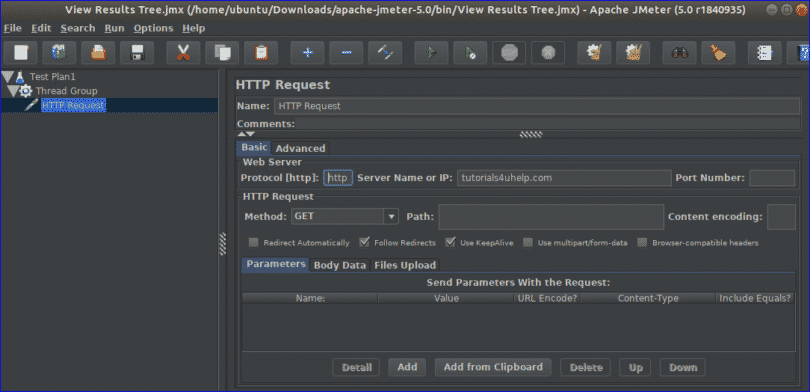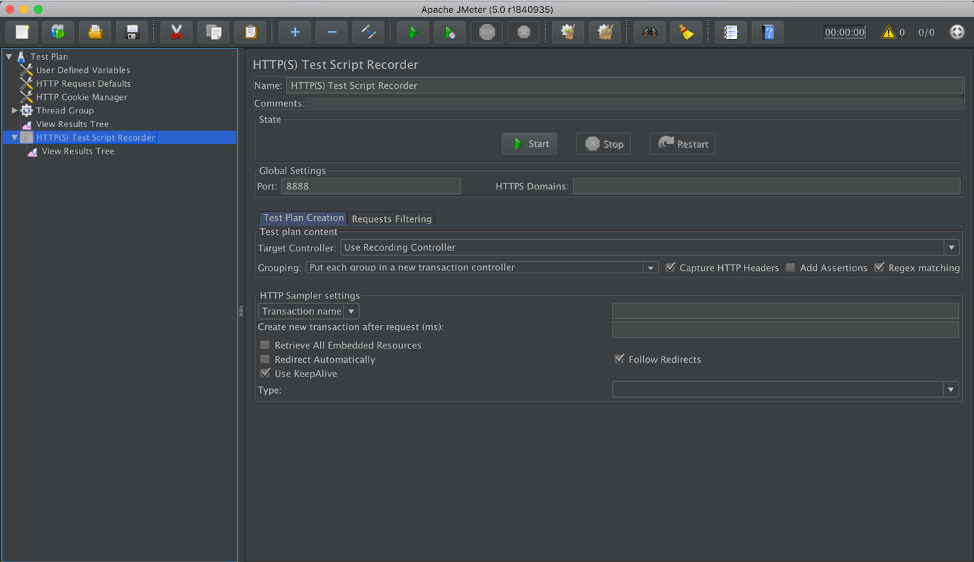
Jmete.properties under C:\apache-jmeter-2.13\apache-jmeter-2.13\bin. Unzip the JMeterPlugins-version.zip file, and put JMeterPlugins.jar in the unzipped file under $\lib\Ext
Apache jmeter plugin download#
Download stand+extras, so there are more charts available.ģ.

caseFormat: This function provides a changing string case format.iterationNum: This function returns the number of the current iteration in the thread group.isDefined: This function checks to see if the variable is previously defined.doubleSum: This function calculates the sum of floating-point values.chooseRandom: chooses a random value from the list of arguments.Env: this receives an environment variable value.Uppercase and lowercase: this function changes the case of the string or variable value.strReplaceRegex: This function is like Find and Replace All where all occurrences of a substring matching a regular expression are replaced with a replacement string.strReplace: This function replaces a part of the string with another string.This plugin extends JMeter functionality with a number of functions: So, this function will be able to increase the number of threads up to 500 in case the request per the second schedule not met during the test run.

50 is the number of spare threads to be kept in the thread pool. 500 is the number of max threads allowed. Here, Throughput_Shaping is the Throughput Shaping Timer to integrate with. if requests per the second schedule are not achieved during test runs.Įxample: $ It also provides additional threads if the criteria are not met i.e. The job of the feedback loop is to see if enough number of threads are running at any time. This function enables a feedback loop for the number of threads. The main advantage of reading about this property is we can setup requests per second throughput with JMeter.properties file or we can setup requests per second with the command line while running the JMeter.Įxample: load_profile=const(30,20s) line(30,100,1m)step(5,20,5,5m) step(N, K, S, T): step generates a stepping load from N requests per second to K requests per second, each step height to will be of S requests per second, each step duration will be T seconds.line(N, K, T): line generates a linear increase of the load from requests increasing from N to K per second for T number of seconds.const(N, T): const holds a constant hold of N requests per second for T number of seconds.This property specifies a load pattern with a set of function-like declarations. This feature provides users with the ability to process a JMeter property “load_profile”. NOTE: I have added this Listener to the Test Script Generated in the previous step and then executed the script.Īs you can see from the image above, the Timer has a fixed schedule table and a preview graph which makes it easier to control a load during the test run. Right Click on Sampler(HTTP Request)→Add→Listener→ Threads Over Time.Active Threads Over Time: This Listener shows the list of concurrent users active in each thread group during a test run. The Plugin can be downloaded through Plugins Manager by selecting the checkbox in front of 3 Basic Graphs in the list of available Plugins.Ī. These Listeners provide data in the Graphic form, enabling you to better analyze the results and decide what steps to take in the future. Transactions Per Second: This shows the successful/ failed transactions per second.Response Times Over Time: This is used to calculate the average response time.Active Threads Over Time: This is used to show the list of Active Users in each Thread during a test run.

3 Basic Graphs was designed to serve 3 purposes or we can say it adds 3 types of Listener to the JMeter serving 3 very important tasks:


 0 kommentar(er)
0 kommentar(er)
